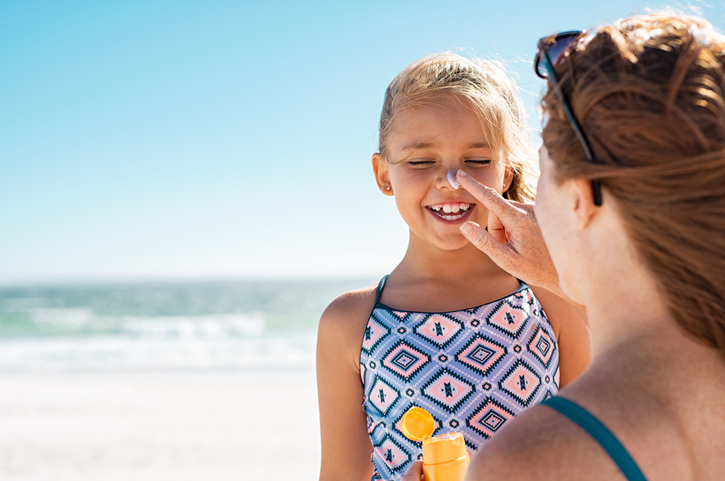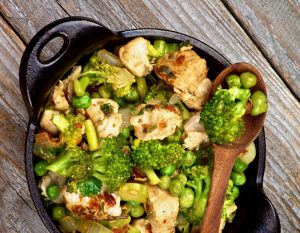Expert Sun Safety Information & Tips

Nothing makes you feel uneducated like trying to choose a simple sunscreen for yourself and your kids. Even the savviest among us get stumped when it comes to SPF, UVA, and UVB ratings. That’s why we consulted Dr. Sandy Skotnicki of Bay Dermatology Centre, our friend, mom of three boys, and expert dermatologist, who also has flawless skin. She sent us her sun safety tips and favourite picks for sunscreens.
Experty Sun Safety Information & Tips
SPF:
SPF refers to the product’s ability to block out the sun’s harmful rays. An SPF 15 product blocks about 94% of UVB rays, an SPF 30 product blocks 97% of UVB rays, and an SPF 45 product blocks about 98% of rays.
UVA & UVB:
UVA rays age skin while UVB rays burn it. Overexposure to either can irreparably damage the skin.
Bottom Line: The SPF number on sunscreens only reflects the products’ ability to screen UVB rays, so it is important to look for broad spectrum sunscreen/sunblock that blocks out both UVB and UVA rays.
Understand that sunscreens over SPF 30 are better, but remember that a high SPF level isn’t enough. SPF only tells you about UVB coverage, so a really high SPF (i.e. 60) may have little to no UVA coverage and UVA is the more important UV wavelength to protect ourselves from. Most important is not the SPF level but the broad band UVA and UVB coverage.
It’s Not All the Sun’s Fault…
The sun is only one risk factor for skin cancer. Remember that skin cancer can develop in areas never exposed to the sun, just like lung cancer is not exclusive to those who smoke.
The Truth About Zinc…
Zinc, commonly used in natural sunblocks, is not unsafe—despite occasional news reports to the contrary. (Some news reports suggest the nano molecules of zinc and titanium are so small they can penetrate and get into our body.) Dr. Skotnicki says these sunblocks are not harmful and that all zinc and titanium-based products have to adhere to set guidelines.
Sunscreens Do Not Block All UV Rays…
Some UV rays still penetrate past the sunscreen. What you want to do is decrease the most harmful ones (UVA) the best you can. Definitely avoid sunburns, as burning is associated with increases in both basal cell carcinoma and melanoma. Seek out shade whenever possible, or bring your own in the form of a beach umbrellas or baby beach tents.
SPF in Your Makeup Is Not Enough…
A minimum of a teaspoon size of foundation/makeup is required to get enough of the SPF 15 you need. Since SPF is determined by a specific quantity of sunscreen applied to the skin, if you are under that quantity (i.e. one teaspoon for the face), the SPF is less. If you are out for short periods—and not between 11 am and 2 pm—then it may be enough coverage. Otherwise, use makeup for makeup and sunscreen for sunscreen.
Know the Difference Between Sunscreen and Sunblock
Sunblocks (zinc, titanium) do not contain chemical sunscreen that is needed to be absorbed into the skin for truly effective sun safety. Zinc and titanium sit on the surface of the skin and instead reflect the light and UV rays.
There’s No Such Thing As a Healthy Tan
We may think we all look better with a little sun-kissed glow, but according to our dermatologist, there is no such thing as a healthy tan, unless that tan comes from a bottle!
Cover Up!
SPF-swimwear is a literal extra layer of protection for soft baby skin. And sunhats are absolutely essential. Good thing they are also pretty cute!














